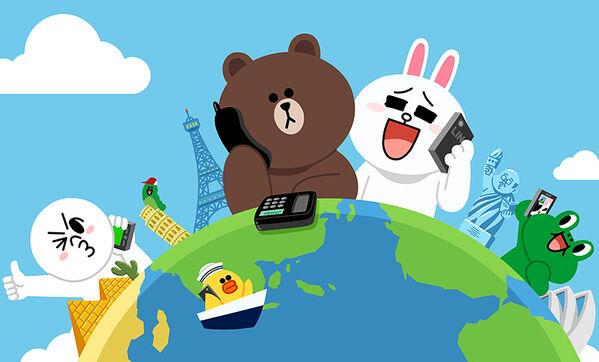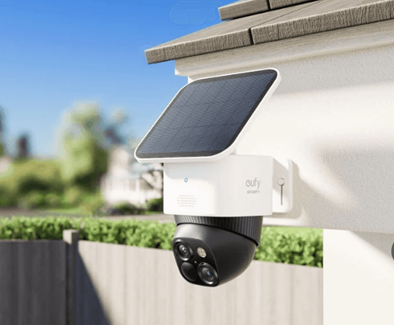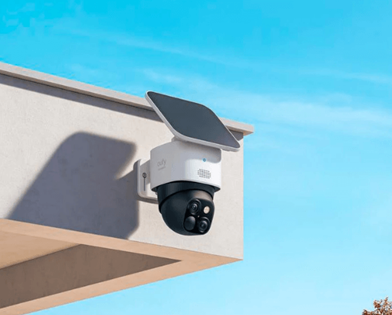It’s undeniable that travelling has become significantly more complicated since the pandemic. Yet for all the unexpected red tape you might encounter when crossing borders, travelling is still fairly straightforward: choose a destination, book your flights and hotels, and make sure you prepare all the necessary paperwork. (And if you’re coming to Thailand, that likely means a LOT of paperwork.)
But with such amazing technology at our disposal, it’s easy to take all the modern conveniences they offer for granted or underutilize them, especially when travelling abroad. Using the phone in your pocket, you can easily book a flight and check in online, compare hotels and book a room, order food and taxis, find local businesses and navigate to them, plan the routes for your day trip and communicate in foreign languages. So whether you’re just visiting or about to move the Land of Smiles, here are the Top 8 apps you must download for Thailand in 2022.
Transportation: Grab Grab is the equivalent of Uber, but with a twist. It’s not just for car rides, but also for food and grocery deliveries. The colorful metered taxis often cause a stir among travels, and drivers will always blame the meter for being either glitchy or broken. That’s why we highly recommend Grab, as it’s loved by locals and foreigners alike. You can choose from a variety of vehicle prices, including a standard city car, a premium car or an SUV. In a rush? You can also book a motorbike if you prefer to be fast and furious (just remember to hold on tightly and wear your own helmet). You can pay by cash or credit card. The Grab app will calculate the distance, expected arrival time and estimated service charge for you, leaving you with nothing to do but wait for your cab to arrive.
Navigation: Google Maps Google’s ubiquitous app offerings often get overlooked. But anyone will admit that getting around Thailand is not as easy as we want it to be, especially Bangkok. Traffic is unpredictable and city planning is a complete mess. With Google Maps, navigation is made easier, as it eliminates much of the guesswork, presenting the quickest route by default.
That’s also part of the problem — all the guessing and choosing it does for you. If you’re driving, the app will only present the top two or three route options, based on time (ex: detour with toll rolls) or distance (ex: detour through a neighborhood with narrow winding streets), when the most obvious route (ex: go straight, turn left) is not an option. Or if you’re on foot, it might give you a ridiculous detour of several kilometres to avoid a short one-way road, when you can just safely walk down the road a few hundred kilometres to your destination.
Also, don’t expect the app to function exactly the way it does back home or to speak perfectly logical English. For your information, the people who actually update the Thai map are in fact Thai people working at Google’s office in Beijing. So their mastery of the English language, or the lack therefore, will definitely manifest itself in some form or another while you’re navigating Thailand’s tricky highways and byways (ex: “turn left onto the ramp” might mean “take the exit on your left”). This becomes especially infuriating when driving, as one wrong turn on the highway could easily become a 30-minute detour with double tolls. And why can’t the AI voice pronounce Thai place names correctly? Trying to match the app’s botched mispronunciations with the incorrect phonetic spellings on Thai road signs while you’re driving at 80km an hour can be a confusing headache (ex: “Srinagarindra Road”).
Finally, the GPS signal often gets dropped when passing beneath the man large concrete structures that make up the tangle of elevated ramps, highways and BTS lines throughout Bangkok (a problem consistent with both Apple and Android devices). It means you always have to be looking ahead, anticipating the next turn or two, in case your phone drops its GPS signal while navigating. A worst case scenario is the map will actually automatically reroute you while you’re driving because of GPS obstruction. It can be a nightmare, especially because it usually happens at some key intersection or fork in the road. But don’t panic. Take a deep breath and stay the course until the app figures out what happened and gets back on track.
So although Google Maps can be useful for starting your trip in the right direction, you need to adjust to its limitations and learn how to work around them in everyday use. Wherever you’re headed, always use your eyes, ears and whatever you’ve got between them while navigating in the Land of Smiles. Physical maps and street signs with admittedly poor English still exist here. Use them.
Translation: Google Translate While Google’s translation isn’t perfect (why is the default pronoun for “I” always “Chan”!?), it gets the job done. Most Thai people you’ll meet will have at least a basic level of English proficiency, especially if they fall in the 20s-30s age range. But don’t expect anyone at the market to accommodate your monolingualism. So it’s safe to have a nifty translation app installed for everyday communication, to help you purchase that bag of mangos at a fair price or negotiate with your landlord. Food stalls or street food booths usually won’t have an English menu, either, so the app will really come in handy, especially if you want to try something new. Just click the camera icon and you live-translate any written text you see.
However, like the Maps app, the Translate app has its limitations. Besides the annoying personal pronoun problem mentioned above, it’s impossible to have a live conversation, as the microphone listens to just one voice at a time. Here it’s also frustrating because it doesn’t listen long enough for people to start speaking. Or you might blurt out an urgent message only to find the app didn’t pick it up at all. Then you’ll have to do the hard work of painstakingly typing your message perfectly in the text box to get a proper translation. This is made all the harder when you find yourself in a stressful situation and need to communicate immediately. Maybe your hands are shaky or you’re sweating profusely from walking in the heat. Or maybe your battery is too low or the sun is too bright and your screen is too dim. Technology has a funny way of failing when you need it most.

So if your Thai isn’t up to speed and your technology hasn’t been updated for a while, make sure you always have a few phone numbers of some good Thai friends whom you can call to help you communicate in emergency situations. They can turn out to be real lifesavers when technology fails.
Communication: LINE If you’re going to be in Thailand for the long haul, Line (stylised in all caps) is an important app to have. Both WhatsApp and Messenger are used here, but neither one is the main communication app. Most Thais will ask you for your Line only and expect you to have it. Like most other messaging apps, Line is free and easy to use. The app originated in Japan, before making its way to Thailand. It has a ton of cute sticker for you folks out there who prefer to communicate with emojis. Forget about the “metaverse” — Line users have been immersed in a world of proprietary bear and rabbit emojis for years. But Line offers more than just free texting, voice and video calls and annoyingly cutesy emoticons. Line Manga allows users to read their favorite manga. Line Live has TV series and movies you can stream. Line Pay allows users to pay for services. Line Game has a good collection of entertaining and light hearted games for users of all ages. Line Dictionary is there to help you learn Thai, or for locals to brush up on their English.
Exchange Rates: XE Currency XE Currency will come in handy whenever you have to check for currency rates. It’s great for tracking live mid-market conversion rates so you can compare it to the prices offered at currency exchange booths or locals banks. The application is largely recognized as one of the most precise currency trackers. It covers all currencies, so you won’t have any problems when you’re checking or converting Thai baht. Instead of visiting a bank, just to check the prices and exchange rates on the app. XE Currency really comes in handy when it’s time to check numbers and make sure you don’t get scammed.
Shopping: Lazada & Shopee Sadly, Amazon isn’t available here, but it will make a lot of us happy. Yes, we can still order things but it comes at a price of high shipping fees and other complications. Both Lazada and Shopee are here to solve that problem, and they do a great job. For nearly everything you want to buy, both apps have it covered. As for payment methods, there are several options you can choose from for Shopee and Lazada. Cash on delivery is a good option if you’re worried about using an international credit card, but you have to be in person to receive and pay for the package. You can also pay at an ATM machine.
Food: Food Panda There are a few apps you can download when it comes to food, and they can be surprisingly inconvenient until you get used to them. While Grab is useful for food orders, it’s mainly in Thai, so we recommend using Food Panda. The app has a large number of restaurants to choose from, including many that provide delivery in 40 minutes or less, as well as step-by-step order tracking – but this isn’t always accurate. For as much as they spend on all those annoying YouTube ads, it’s nice to see they’ve put a little bit more thought into their English-language presentation than the competition. You’ll appreciate it when it comes time to order padthai or a matcha latte.
Honorable Mentions! For those apps that aren’t daily necessities, but could possible make your life more convenient — when functioning properly in specific use scenarios…
Immigration eServices: There is a whole list of failed apps launched by the government to make life more convenient for foreigners by eliminating paperwork and reducing the need for long trips to the local police department or immigration office. For example, the eTM6 app, released in May 2019, has only 5K installs on Google Play and 0 reviews at the time of writing; it was last updated in November of that year. But the Immigration eServices app has seen a bit more success, so it’s worth downloading just in case it actually works when you get here. Theoretically, you should be able to use the app to register your place of residence in Thailand and file your 90-day report. The app will then issue an electronic document called a TM30. It will also keep track of your previous reporting times on the app. Launched alongside the eTM6 app in May 2019, the Immigration eServices app now has more than 50K downloads on Google Play and was last updated in March 2020, at the time of writing. It has a deplorable 1.5 star rating. Alternatively, can also try using the immigration website. Successful applicants will receive the document as a PDF sent to their email address.
7-Eleven: Of course, there are many other useful apps that can make life in Thailand more convenient. If you don’t want to walk to your local 7-Eleven, you can easily order from their app. Like Grab for food, it’s currently only on Thai, so you’ll have to snap screenshots of each page and translate them in the Google Translate app before submitting your oder. You can also pay on delivery, which is a really nice option if you only have cash. But is this app really necessary, given that you can find a 7-Eleven on nearly every street corner? Well, yes. This app is quite useful for those who find themselves in quarantine, either at a hotel for travel or at a hospital for Covid-19. Dying to order a cheap iced Americano? Look no further!
TrueMoney: Once you’ve settled down here and open a Thai bank account, then then a whole new world of convenient bank and payment apps will open up to you. One of these is TrueMoney. It’s an e-wallet you can link to your Thai bank account and top up for cashless payments, kind of like PayPal. Although it’s only available at certain vendors, for example 7-Eleven, it’s becoming for popular. The downsides are they require a lot of personal information, including a picture of your face with your passport (and possibly your work permit, if you have one) and while topping up your digital wallet it free, transferring out to a bank will cost a fee. But if you have a Thai bank account, we strongly suggest downloading the bank’s app. Then you can use the PromptPay cashless payment system, which allows you to scan a QR code to pay. If it doesn’t work, you can always manually type in the vendor’s bank info and transfer the money that way directly from your bank app. Often, a vendor will display both TrueMoney and PromptPay QR codes side-by-side, giving you more cashless payment options.
What’s your take? So there you have it, our Top 8 apps to download for visiting Thailand in 2022. There are many apps out there that can make your trip more convenient — when they work properly and you know how to use them. So what’s you’re take? What’s been your experience with the apps mentioned above? If you’ve been to Thailand before or if you live here, let us know what apps you find most useful in the ThaigerTalk comments section below!
Get more from The Thaiger
FREE APP: ANDROID or iOS | HAVE YOUR SAY FORUM |









